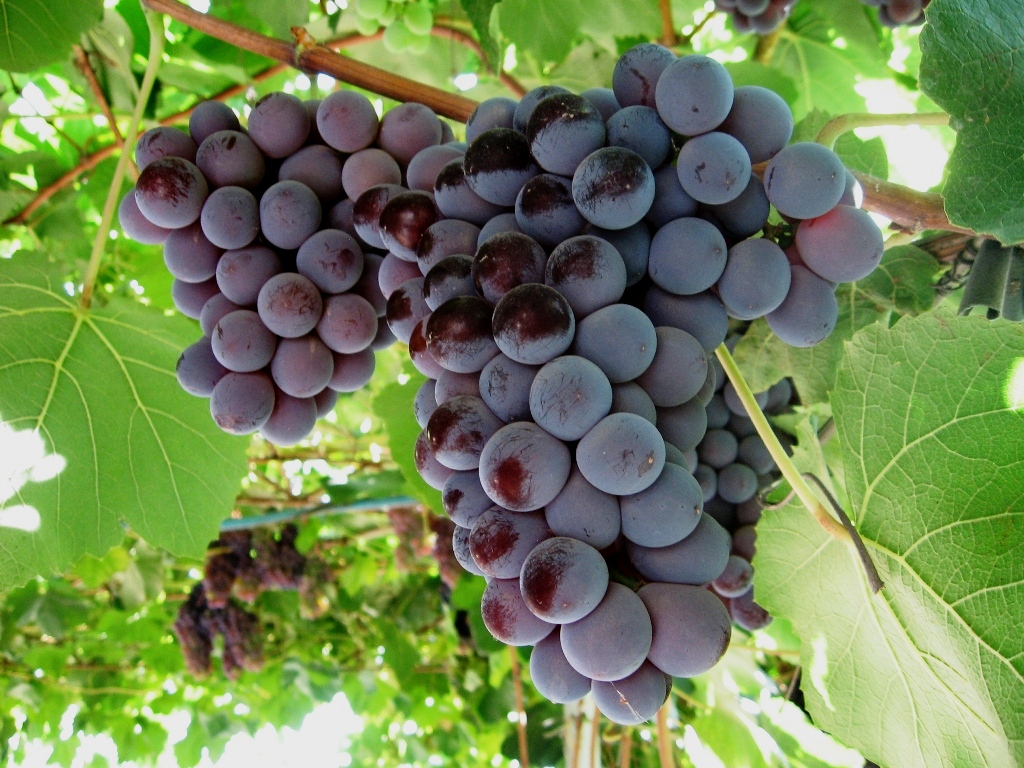
Grapes "Cardinal" is a classic variety in viticulture. Bred it in the middle of the twentieth century in California, USA. Breeders Harmon F. and Snyder E. took the “Alphonse Lavalle” and “Queen” varieties as the basis.
He appeared on the territory of Russia in 1958, but was registered in the State Register of Breeding Achievements only in 1974. Zoned for cultivation in the Caucasus and Lower Volga region.
Content
Grape characteristics
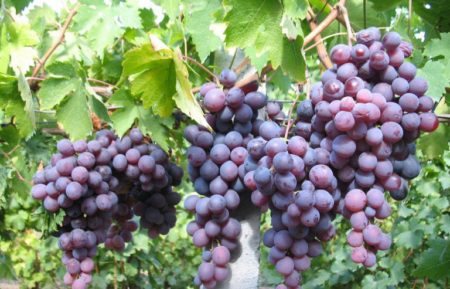
The variety of berry culture is included in the group of early ripe, ripens for 105-120 days from the start of the growing season. Grapes are hybrid, but this does not stop breeders from including it in new breeding lines and getting new, more advanced varieties. Productivity on an industrial scale is 11 tons per hectare. From the bush, the return is 20-25 kilograms.
Transportability of grapes is possible over long distances. Subject to the correct temperature and humidity, it retains taste and appearance for up to three months. Berry culture is unstable to diseases of fungal and viral origin. Often struck by mildew and oidium. The plant is absolutely not resistant to sudden changes in weather conditions. In winter, the vine freezes without shelters.
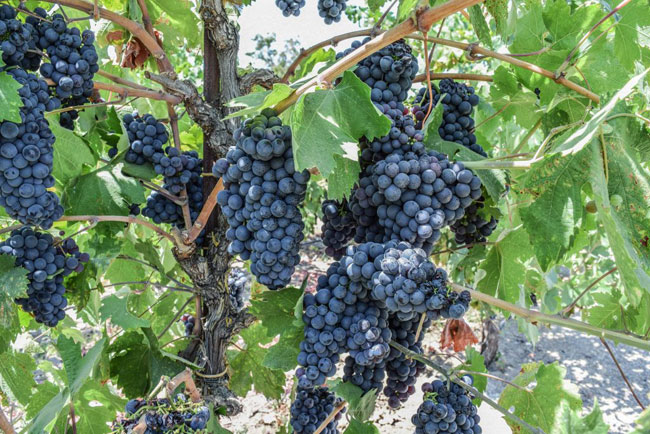
Black Pearl grapes: characteristics and description of the variety, planting and care
Grapes Black pearl in its parameters is a classic wine variety, but many gardeners mistakenly consider ...
Description of the bushes
Bushes form vigorous and densely leafy. Their height reaches 3-3.5 meters. The vine does not fully mature in a year, only the lower part. Leaf plates are large, five-lobed, heart-shaped. The surface of the leaves is smooth, without pubescence, the color is light green. On the vine, 40-70 fruiting shoots are formed during the season, on which 1-2 brushes are formed.
Description of clusters and berries
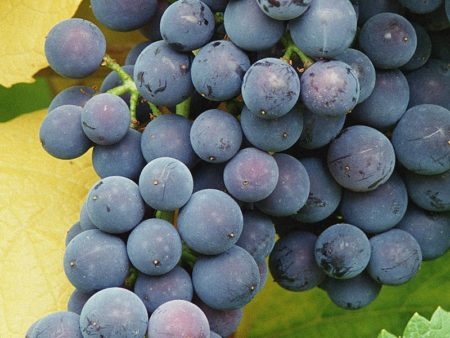
Bunches are tied with a conical or cylindrical shape. Flowers are formed small, light green in color. The density of the brush is average, traces are visible between the berries. The length of one bunch reaches 25-30 centimeters. The mass is small, only 300-600 grams. Fruits are large, oval or round. The weight of one berry is 5-7 grams. On the entire surface of the grapes, slight roughness and grooves are traced. The skin is dense, covered with a dense waxy coating, painted in saturated red with a purple tint.
The pulp is dense, juicy, transparent, with a green tint. Inside, in the center, there are 3-4 seeds. When cracking, the berries crackle. The taste of grapes is balanced, it combines equally a little sourness and sweetness. Berries ripen in clusters not evenly. Inside, where sunlight breaks weakly, they remain semi-green. Despite this, at the tasting contest, “Cardinal” received 8 points out of 10 possible in taste. Berries are used for fresh consumption, processing for juice, as the main ingredient for compote.
Advantages and disadvantages
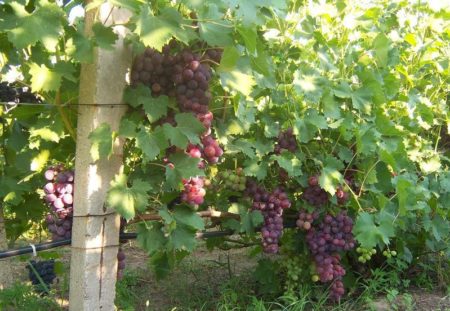
The Cardinal has absorbed the best characteristics of its parents. Among the advantages of winegrowers distinguish:
- short ripening period. The first berries ripen in early August;
- high productivity;
- long-term storage;
- high level of transportability;
- resistance to heat;
- excellent taste.
The disadvantages of the variety are:
- unstable weather conditions during the growing season lead to shedding of the ovary;
- in winter, shelters will be required, the vine and buds are not resistant to lower temperatures, lower than -10-15 ° C;
- not resistant to major diseases of fungal and viral origin;
- demanding on top dressing. The quantity and quality of berries depends on the timeliness of fertilizer application.
Agricultural technology varieties
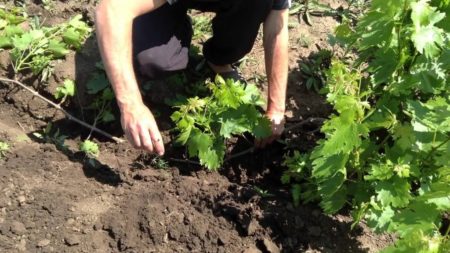
"Cardinal" is a demanding cultivar. Planting it is recommended in regions where winters are mild, where there are no sharp fluctuations in temperature in spring. The ideal soil for grapes is chernozem. On loamy and sandy loamy soils, the yield of berry culture is significantly reduced.
Breeding
The best option for the reproduction of grapes, among all possible, is the grafting of cuttings on the stock of another variety of berry culture. Inoculate, recommended for resistant varieties such as Ifc X Berlandieri and Berlandieri X Riparia. Harvest grafting material in late autumn, when the sap flow stops completely. Cut parts of the vine from the middle part, where they are approximately 7-10 millimeters in diameter. At least 4 kidneys should remain on the handle. To keep the grafting material until spring, cover the ends with paraffin, wrap with paper, put in the refrigerator on the lower shelf or in the cellar.
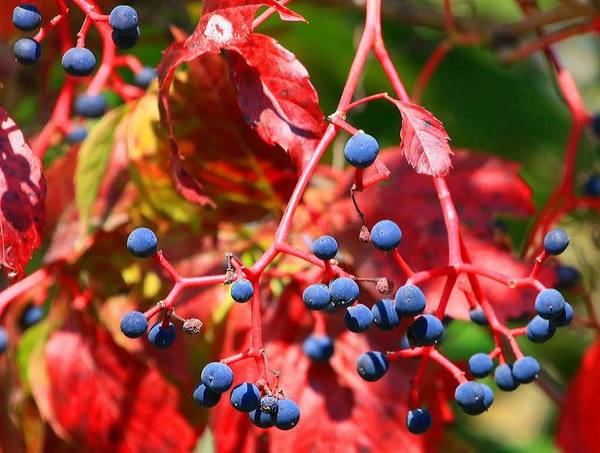
Girl's grapes: characteristics and description of the variety, reviews
Girl's grape is a vivid representative of the Vinogradov family. Unlike ordinary grapes, it does not ...
Plant grapes in late April or early May, when temperature drops are no longer expected.
Grafting grafts:
- Choose an old grape stock.
- Cut the entire bush completely, leaving one stump on the bush.
- Strip the stump so that its surface becomes smooth.
- Using a small ax, chop the stump exactly in half.
- Cut one side of the handle at an angle, on both sides.
- Place the handle in a chopped stump, tie it tight with a rope or thick cloth.
- Coat the grafting site with clay or garden varnish to prevent fungi or viruses from entering the cracks.
- Pour 30 liters of water. Mulch the ground under the bush with sawdust.
Grape care

Watering
"Cardinal" loves moisture, but in moderation. Water the plant once every two weeks from the beginning of the blooming of leaves to the technical ripeness of the berries. Water consumption per bush is 30-40 liters.
Top dressing
Fertilize plants with complex fertilizing before flowering and during the formation of fruits. First time apply liquid to the soil top dressing based on 10 liters of water, 30 grams of superphosphate, 20 grams of urea and 30 grams of potassium sulfide. A second time feed the grapes with the same solution only without urea. In the fall, add rotted manure under the grapes. Consumption per bush is 2 buckets. Scatter organics around the perimeter of the trunk space.
Disease protection
To reduce the likelihood of the manifestation of fungal diseases, treat the bushes with Bordeaux liquid in spring (preparation: 100 grams of copper sulphate, 120 grams of quicklime, 10 liters of water) or any other fungicide.
Pruning
On each bush, leave 5-7 shoots in the fall. The load on one stalk should not exceed 6 eyes so that the clusters are as dense as possible and the berries are large.
Preparation for winter
The Cardinal is subject to shelters even in the warm regions of Russia.After pruning, carefully bend the vine to the ground, cover it with straw, sawdust, and a film on top. An alternative, protecting the vines and buds from freezing, is a mound of soil. The earth, in this case, should completely cover all the branches.
Reviews
Tamara Nikolaevna, Samara region.
Grapes "Cardinal" grows in the country for 3 years. It turns out to take care very rarely, the yield for the first year was not big. The clusters were long, the berries were tied large. In spring, I feed the grapes with a weak chicken solution. I cook as follows: I take 1 kilogram of fresh litter, pour a bucket of water, mix and leave to wander for two weeks. After 14 days, I pour one liter of infusion in a bucket of water and pour it under a bush. Next year I expect a larger crop.
Fedor Nikanorovich, Krasnodar Territory.
I’ve been growing Cardinal grapes on my site for 10 years. Of course, he often gets sick, but the taste and size of the berries so much so me and my family like that the hand does not rise to uproot it. So that the grapes do not hurt, in the spring I carry out two phases of spraying. The first time I am doing a solution treatment on copper sulfate (100 grams of substance and 10 liters of water), when the kidneys have not yet blossomed. The second time I spray the shoots when the leaves are almost completely opened. I use "Ridomil" or "Quadrice" for the prevention of ailments. Their actions are enough until the fall. If the treatment is carried out every year, then the plants are practically not exposed to diseases.

 Non-covering winter-hardy grape varieties for Moscow region
Non-covering winter-hardy grape varieties for Moscow region How to keep the vine in winter
How to keep the vine in winter When can I transfer grapes to another place in the fall
When can I transfer grapes to another place in the fall How to cover and prepare grapes for the winter in the suburbs
How to cover and prepare grapes for the winter in the suburbs
Sergey Aleksandrovich
Cardinal sapling from Serbia planted at the cottage in 2013. The bush gives an annual powerful growth of the vine and an excellent harvest. Fan four-arm single-plane formation